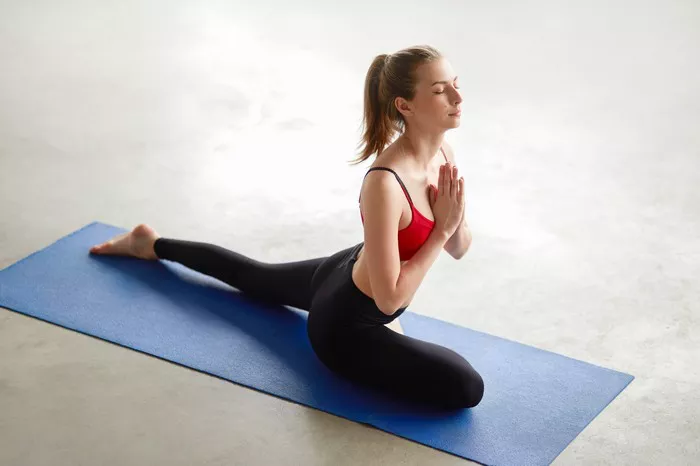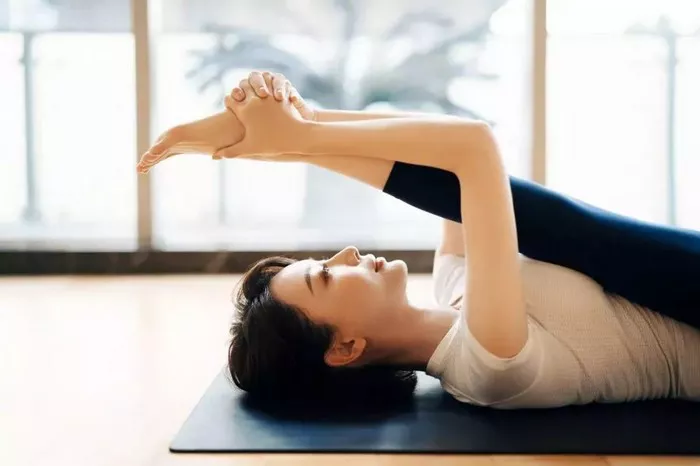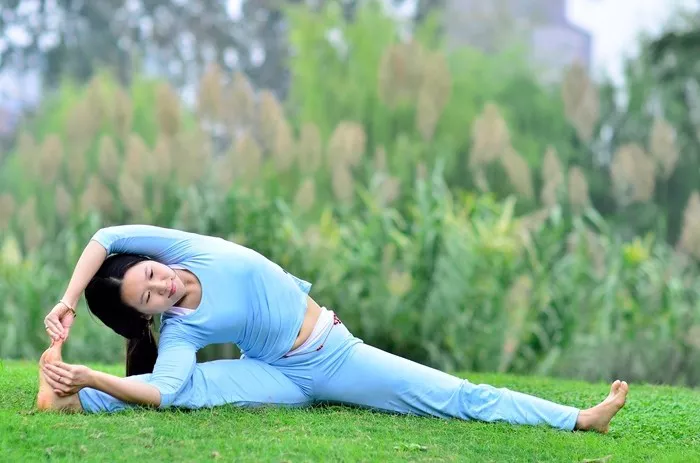Yoga, an ancient practice that harmonizes the body, mind, and soul, offers a myriad of postures (asanas) aimed at promoting physical strength, flexibility, and mental tranquility. Among these, Half Pigeon Pose, or “Ardha Kapotasana” in Sanskrit, stands out for its profound effects on the hips, lower back, and emotional well-being. In this comprehensive guide, we delve into the intricacies of Half Pigeon Pose, exploring its physical benefits, variations, alignment cues, contraindications, and the deeper spiritual aspects it embodies.
Origins and Symbolism
Half Pigeon Pose finds its roots in Hatha Yoga, a branch of yoga that emphasizes physical postures to prepare the body for meditation. The pose symbolizes surrender, humility, and the release of emotional tension stored in the hips, often considered a reservoir for suppressed feelings and memories. As practitioners sink into the pose, they are encouraged to let go of negativity and open themselves to vulnerability, paving the way for inner transformation and healing.
Physical Benefits
1. Hip Opening: One of the primary benefits of Half Pigeon Pose is its ability to deeply stretch the hip flexors, piriformis, and gluteal muscles. This can help alleviate tension and discomfort resulting from prolonged sitting or physical activity.
2. Improved Flexibility: Consistent practice of Half Pigeon Pose gradually increases hip flexibility and range of motion, enhancing mobility in daily activities and other yoga poses.
3. Lower Back Relief: By releasing tightness in the hips, Half Pigeon Pose can alleviate strain on the lower back, offering relief from chronic pain and improving spinal alignment.
4. Stress Reduction: The focus required to maintain proper alignment in Half Pigeon Pose, coupled with mindful breathing, promotes relaxation and reduces stress and anxiety levels.
5. Preparation for Meditation: Half Pigeon Pose serves as an excellent preparation for seated meditation, as it helps ground the body and quiet the mind, making it easier to find stillness and concentration.
Variations and Modifications
While Half Pigeon Pose may seem straightforward, variations and modifications cater to practitioners of all levels and accommodate individual anatomical differences. Here are some common variations:
1. Supported Half Pigeon: Placing a bolster or folded blanket under the hips provides support and reduces the intensity of the stretch, making the pose more accessible, especially for beginners or those with tight hips.
2. King Pigeon Pose (Eka Pada Rajakapotasana): This advanced variation involves reaching the back foot with the same-side hand, deepening the hip opening and quadriceps stretch. It requires significant hip and shoulder flexibility and is best attempted under the guidance of an experienced teacher.
3. Thread the Needle: A gentler alternative to Half Pigeon Pose, Thread the Needle involves lying on the back and crossing one ankle over the opposite knee, then drawing the legs toward the chest. This variation offers a similar hip stretch while providing greater support for the lower back.
Alignment Cues
Proper alignment is essential to reap the full benefits of Half Pigeon Pose while minimizing the risk of injury. Here are some alignment cues to keep in mind:
1. Front Leg: Flex the front foot to protect the knee and engage the quadriceps. Ensure the shin is parallel to the front of the mat, with the knee stacked directly over the ankle.
2. Hips: Square the hips as much as possible to maintain balance and ensure an even stretch on both sides. Avoid collapsing onto one hip by engaging the core and pressing evenly through both sit bones.
3. Back Leg: Extend the back leg straight behind you, with the toes pointing directly back. Press the top of the back foot firmly into the mat to stabilize the pose and deepen the stretch in the hip flexors.
4. Torso: Lengthen the spine on the inhale, lifting through the crown of the head. As you exhale, fold forward from the hips, maintaining a long, flat back. Avoid rounding the spine, which can strain the lower back.
5. Arms: Option to extend the arms forward and rest the forehead on the mat, or keep the hands grounded beside the hips for added support. Relax the shoulders away from the ears and soften the facial muscles.
Contraindications and Precautions
While Half Pigeon Pose offers numerous benefits, it may not be suitable for everyone. Practitioners with the following conditions should approach the pose with caution or avoid it altogether:
1. Knee Injuries: Individuals with acute or chronic knee injuries should avoid deep flexion of the front knee in Half Pigeon Pose to prevent exacerbating pain or discomfort.
2. Hip Injuries: Those with hip injuries or conditions such as bursitis or labral tears should consult with a healthcare professional before attempting Half Pigeon Pose, as it may aggravate existing issues.
3. Pregnancy: Pregnant individuals should practice Half Pigeon Pose with modifications and avoid deep twists or compressions that could strain the abdomen or pelvic region.
4. Recent Surgery: Practitioners who have undergone recent hip, knee, or spinal surgery should seek clearance from their healthcare provider before attempting Half Pigeon Pose or any other yoga postures.
5. High Blood Pressure: Individuals with uncontrolled high blood pressure should approach the pose with caution, as the forward fold may temporarily increase blood pressure. Modification with props and mindful breathing can help mitigate this risk.
Mind-Body Connection
Beyond its physical benefits, Half Pigeon Pose invites practitioners to cultivate a deeper connection between the body, breath, and mind. By tuning into sensations and emotions that arise during the pose, practitioners can develop greater self-awareness and acceptance, both on and off the mat. Here are some tips for fostering this mind-body connection:
1. Intention Setting: Begin each practice with a clear intention or focus, such as releasing tension, cultivating compassion, or embracing vulnerability. Allow this intention to guide your experience in Half Pigeon Pose and throughout your practice.
2. Breath Awareness: Pay attention to the quality of your breath as you move into and hold Half Pigeon Pose. Use smooth, steady breaths to create space and openness in areas of tension, and observe how the breath influences your physical and emotional state.
3. Gentle Inquiry: Notice any thoughts, sensations, or emotions that arise during the pose, without judgment or attachment. Practice gentle inquiry by asking yourself what you need in that moment and responding with kindness and compassion.
4. Surrender and Release: Embrace the opportunity to surrender to the present moment and release any resistance or holding patterns in the body and mind. Trust that the process of letting go will lead to greater freedom and peace within.
Incorporating Half Pigeon Pose into Your Practice
Half Pigeon Pose can be incorporated into a well-rounded yoga practice in various ways, depending on your goals and preferences. Here are some suggestions for integrating Half Pigeon Pose into your routine:
1. Warm-Up: Begin your practice with a few rounds of Sun Salutations or dynamic movements to warm up the body before moving into Half Pigeon Pose. Focus on opening the hips and lengthening the spine in preparation for the pose.
2. Hip Opening Sequence: Create a dedicated sequence focused on hip opening postures, such as Downward-Facing Dog, Lizard Pose, and Cow Face Pose, leading up to Half Pigeon Pose. Hold each pose for several breaths to deepen the stretch and increase flexibility.
3. Cool-Down: Wind down your practice with a series of seated or supine stretches, including Half Pigeon Pose, to release tension in the hips and lower back before moving into Savasana (Corpse Pose) for relaxation and integration.
4. Stand-Alone Practice: On days when time is limited or energy levels are low, practice Half Pigeon Pose on its own as a simple yet effective way to unwind and rejuvenate both body and mind.
Conclusion
Half Pigeon Pose is more than just a physical stretch—it is a powerful tool for cultivating balance, resilience, and self-awareness on and off the mat. By embracing the pose with mindfulness and intention, practitioners can unlock its myriad benefits, from increased flexibility and mobility to enhanced emotional well-being and inner peace. Whether you’re a seasoned yogi or a beginner on the path, Half Pigeon Pose invites you to journey inward, connect with your breath, and surrender to the present moment with grace and gratitude.
FAQs:
Why is pigeon pose so difficult?
Pigeon pose is challenging primarily due to its deep hip-opening nature. It requires significant flexibility in the hips, groin, and lower back. Tightness in these areas, often caused by sedentary lifestyles or physical activities like running, can make it especially difficult to achieve the full expression of the pose.
Can you do pigeon pose daily?
Yes, you can practice pigeon pose daily, but it’s essential to listen to your body. Regular practice can improve flexibility and mobility in the hips and lower back, but overdoing it can lead to strain or injury. It’s best to incorporate it into a well-rounded yoga routine.
Does pigeon pose release trauma?
While there’s anecdotal evidence suggesting that pigeon pose may help release emotional tension stored in the hips, there’s limited scientific research directly linking it to trauma release. However, like many yoga poses, pigeon pose encourages mindful breathing and relaxation, which can contribute to overall stress reduction and emotional well-being.
Does pigeon pose release emotions?
Pigeon pose, like many yoga poses, can facilitate the release of stored emotions, especially if practiced mindfully with focused breathing and awareness of sensations in the body. The deep hip opening and stretching may help unlock tension and emotional blockages held in the hips and lower back. However, individual experiences vary, and it’s essential to approach the practice with patience and self-awareness.





















